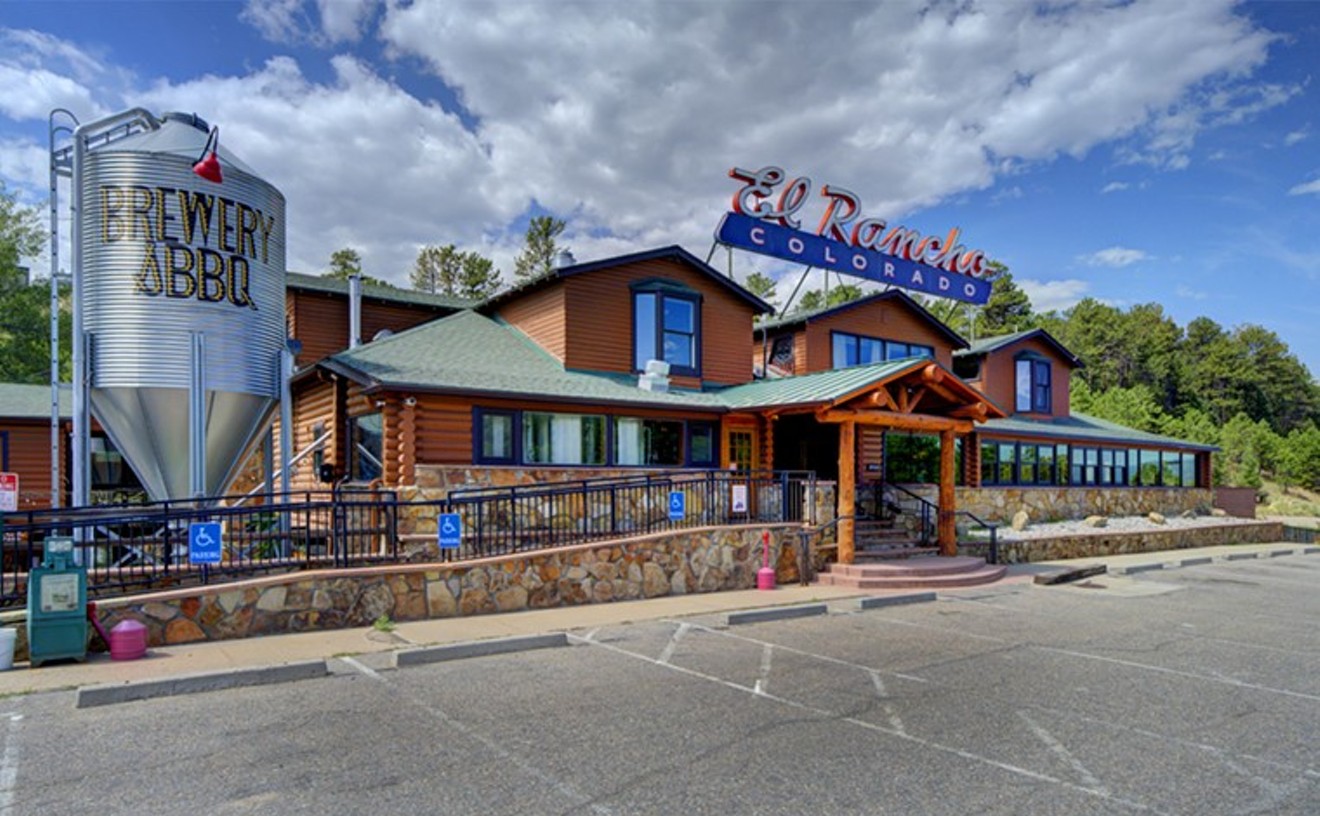Pigs, like people, arrived in waves to the islands of Hawaii, tagging along with the first Polynesians but also bolstering their genetic stock from the subsequent European influx. The feral descendents of those seafaring swine now spread havoc across the archipelago, rooting up native flora and crowding out more delicate species. The primary solution -- eating them -- has had minimal impact on their numbers, but has at least led to the perfection of pork-based recipes over generations. If L & L Hawaiian Barbecue could somehow figure out how to effectively cull and serve Hawaiian pigs at its many locations (175 and growing) throughout the United States, it could perhaps finally provide a solution to this particularly invasive -- if tasty -- problem. Until then, we'll have to be content with L & L's pork-heavy menu, whatever the source.
See also: Speaking Spammish at Iwayama Sushi & Da Big Kahuna Bistro
I met a few friends for a Saturday lunch at L & L, and it seemed as if half of Aurora had similar ideas of pigging out on plate lunches, Asian-inspired grilled or breaded meats, and the pressed, maki-style rice rolls called musubi. It wasn't just busy: It was just short of chaos, with a line out the door, every table full, and customers lingering in every open space waiting for a takeout order or a seat to open.The long but quickly moving queue gave us just enough time to study the menu and come up with a few good picks while contemplating the meaning of the word "mahalo," which, judging by the signs around the joint, could mean anything from "put your trash here" to "thank you" to "you're crazy if you think you're getting another free serving of Sriracha sauce."
In addition to two kinds of roasted pork, Spam in two different preparations, and pork sliders, we also ordered a Korean-style beef and chicken plate lunch, a mound of loco moco, and some malasadas -- sugary little balls of fried dough just big enough to require two bites. With our selections shoveled into Styrofoam clamshells (even though we ordered to eat in -- takeout orders go into additional plastic bags), our little table soon resembled a scale map of the Hawaiian islands modeled from less than ecologically friendly materials: A double-stack of plate lunches representing the Big Island, the short-rib combo standing in for Maui, and the remaining smaller containers representing the more western isles. Keep reading for more on L & L. The first obvious difference between this meal and the Hawaiian dishes I sampled last week at Iwayama Sushi & Da Big Kahuna Bistro is that L & L is decidedly fast food, or fast-casual, if you buy into current industry lingo. And perhaps that's as it should be; many staples in the modern Hawaiian lexicon of craveable creations lean toward quick and cheap comfort food, the kind a mom with little time or money might throw together for hungry kids. Loco moco somehow doesn't take to being fussed with; the individual components are best when they meld together in a slurry of egg yolk, beef fat, and simple brown gravy. A good kitchen like Iwayama's can elevate the egg using gentle heat to achieve a perfect sunny-side up, can source the beef and hand-form the patties before subjecting them to expert char-grilling. Even the gravy can be made from scratch using techniques that take if far from the realm of a quick and greasy pan sauce thickened with flour.In other words, the loco moco at L & L satisfies and comforts precisely because of its cheap ingredients and hasty preparation. The gravy may even come from a mix or from giant sloshing bags shipped from corporate by the truckload. It doesn't matter. Nor does it matter that Spam makes a slorping sound when it's released from its can; the crisp-fried surface and tender interior is exactly right for the 2x4 of sticky rice it tops in the nori-wrapped musubi and is exactly right in a simple fried-egg sandwich. Even the more worldly Portuguese sausage musubi paled in comparison to its Spam sibling.
Not to say that all Hawaiian cuisine takes its inspiration from 1950s hash-slinging diners. The deep meatiness and tender texture of the kalua pork could only come from hours of slow cooking, and the lau lau pork, wrapped and steamed in taro and ti leaves, is only available on weekends. This preparation captures better the long tradition of slow-cooking in earthen pits, using ingredients that, while not native to Hawaii, came with the original Polynesian settlers and their pigs, giving the pork a distinct tinge of swampiness similar to water spinach, only with a mineral flavor like strong-brewed oolong replacing the bitterness. The beef short-ribs, sliced thin and through the rib bones, also displayed a little more technique and history, with a pleasing chewiness and sweetish marinade suggesting Korean roots, despite being labeled "Hawaiian BBQ."I'll still pick Iwayama first for its selection of raw fish -- like a pricier but huge and fresh portion of ahi poke -- but L & L captures the spirit and simple pleasure of Hawaiian working-class food with just a hint of history and joyous collision of world cuisines (even those simple doughnut holes can trace their roots to the Portuguese). And I'll gladly fight the weekend crowds for another plate of that unique and wonderful bundle of lau lau, which rose above the surf-culture kitsch, the cheap canned tropical juices, and the tasty but less uniquely Hawaiian fast-food fare.
For more from our tour of Denver's cultural, regional and international restaurant scene, check out our entire Ethniche archive.
Follow @CafeWestword











